Combine pandas DataFrames Vertically & Horizontally in Python (2 Examples)
This article illustrates how to merge pandas DataFrames vertically and horizontally in the Python programming language.
Table of contents:
Let’s get started:
Example 1: Combine pandas DataFrames Horizontally
Example 1 explains how to merge two pandas DataFrames side-by-side.
To be able to apply the functions of the pandas library, we first need to import pandas:
import pandas as pd # Load pandas library
Next, we can construct two pandas DataFrames as shown below:
data1a = pd.DataFrame({"ID":range(1, 5), # Create first pandas DataFrame "x1":range(10, 6, - 1), "x2":["a", "b", "c", "d"], "x3":range(26, 22, - 1)}) print(data1a) # Print first pandas DataFrame
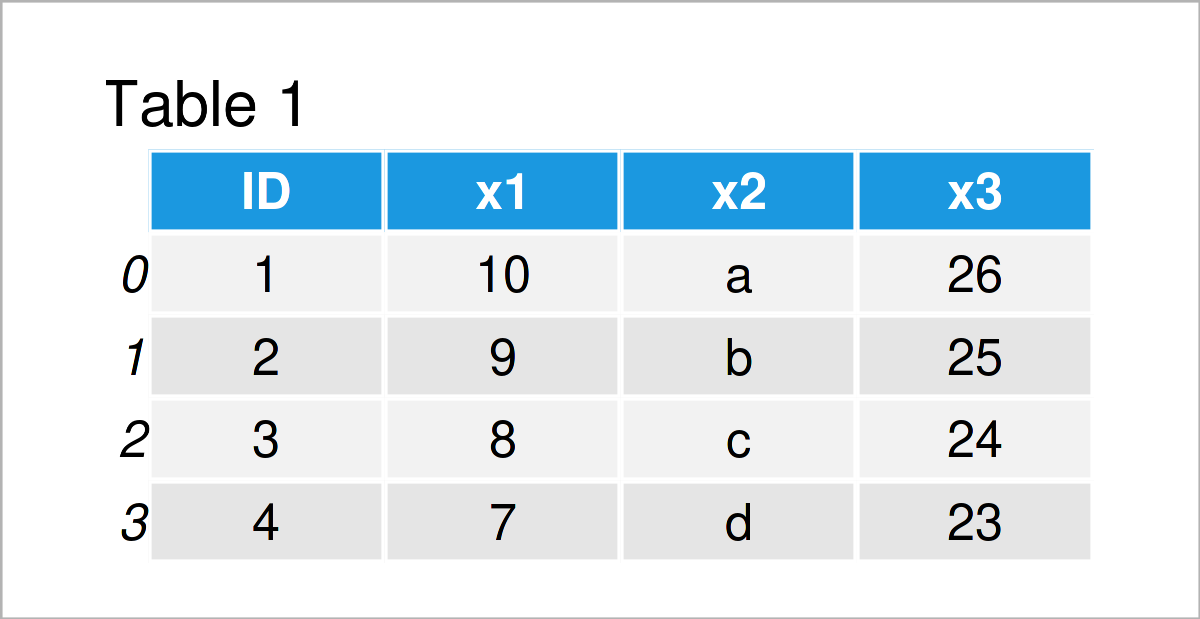
data2a = pd.DataFrame({"ID":range(2, 8), # Create second pandas DataFrame "y1":["x", "y", "y", "x", "y", "y"], "y2":range(12, 1, - 2)}) print(data2a) # Print second pandas DataFrame
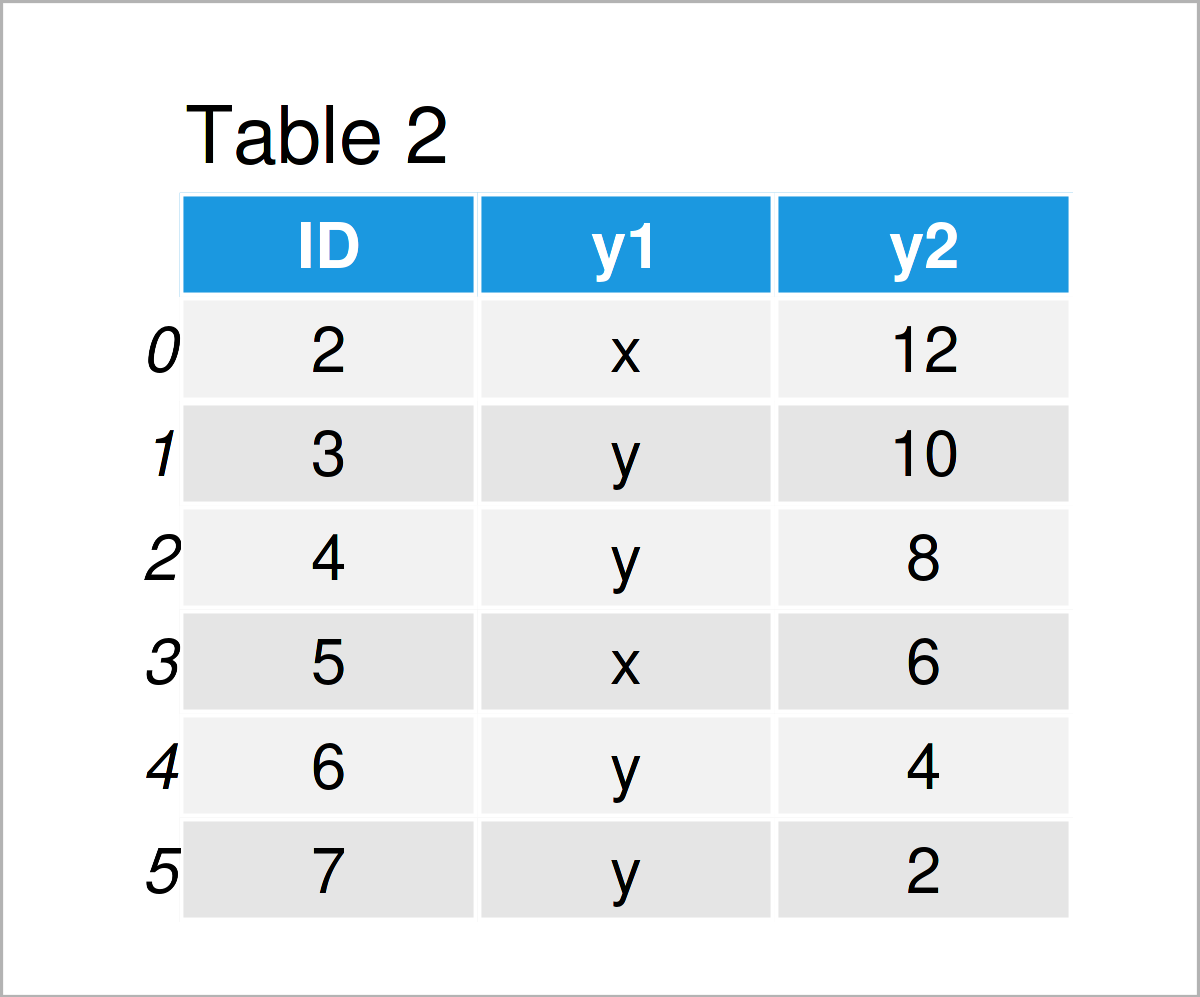
The output of the previous Python programming syntax is shown in Tables 1 and 2: We have created two pandas DataFrames with a shared ID column, but different variables and values.
If we want to concatenate these two data sets horizontally, we have to apply the merge function as shown below:
data_horizontal = pd.merge(data1a, # Combine horizontally data2a, on = "ID", how = "outer") print(data_horizontal) # Print merged DataFrame
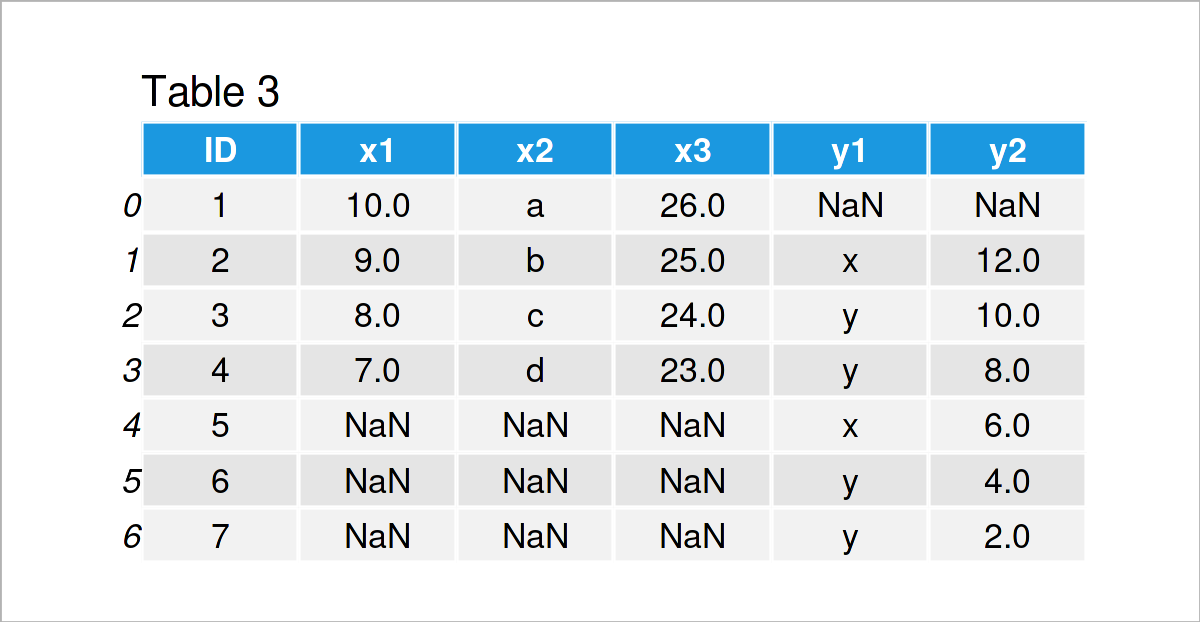
The output of the previous Python code is shown in Table 3 – A horizontally appended pandas DataFrame containing the values of our two input DataFrames.
Note that we have used an outer join in this example. However, we could apply the same syntax to perform other types of joins such as inner, left, and right joins.
Example 2: Combine pandas DataFrames Vertically
This example demonstrates how to append two pandas DataFrames vertically.
In preparation of the example, we first have two create two pandas DataFrames:
data1b = pd.DataFrame({"x1":range(11, 6, - 1), "x2":["a", "b", "c", "d", "e"], "x3":range(28, 23, - 1)}) print(data1b) # Print first pandas DataFrame
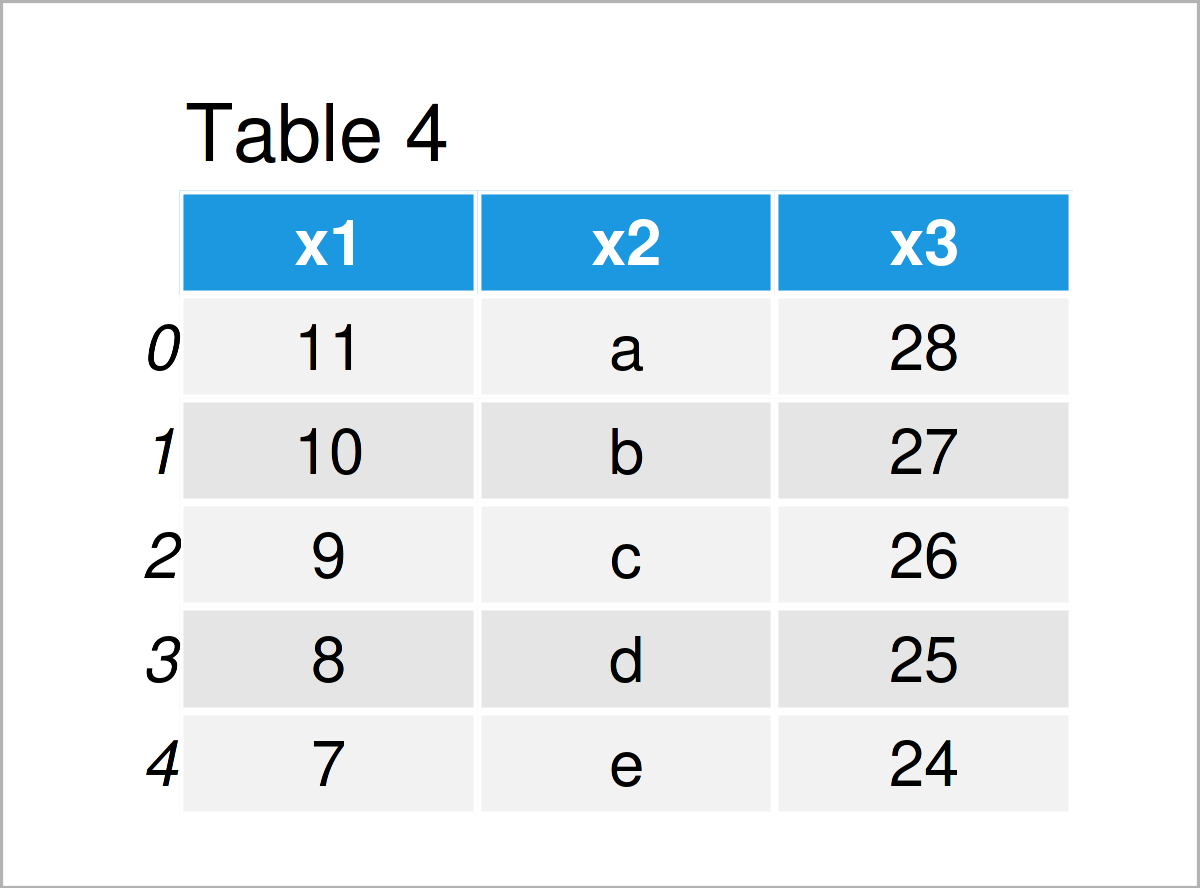
data2b = pd.DataFrame({"x1":range(1, 8), # Create second pandas DataFrame "x2":["x", "y", "x", "y", "x", "y", "y"], "x3":range(14, 1, - 2)}) print(data2b) # Print second pandas DataFrame
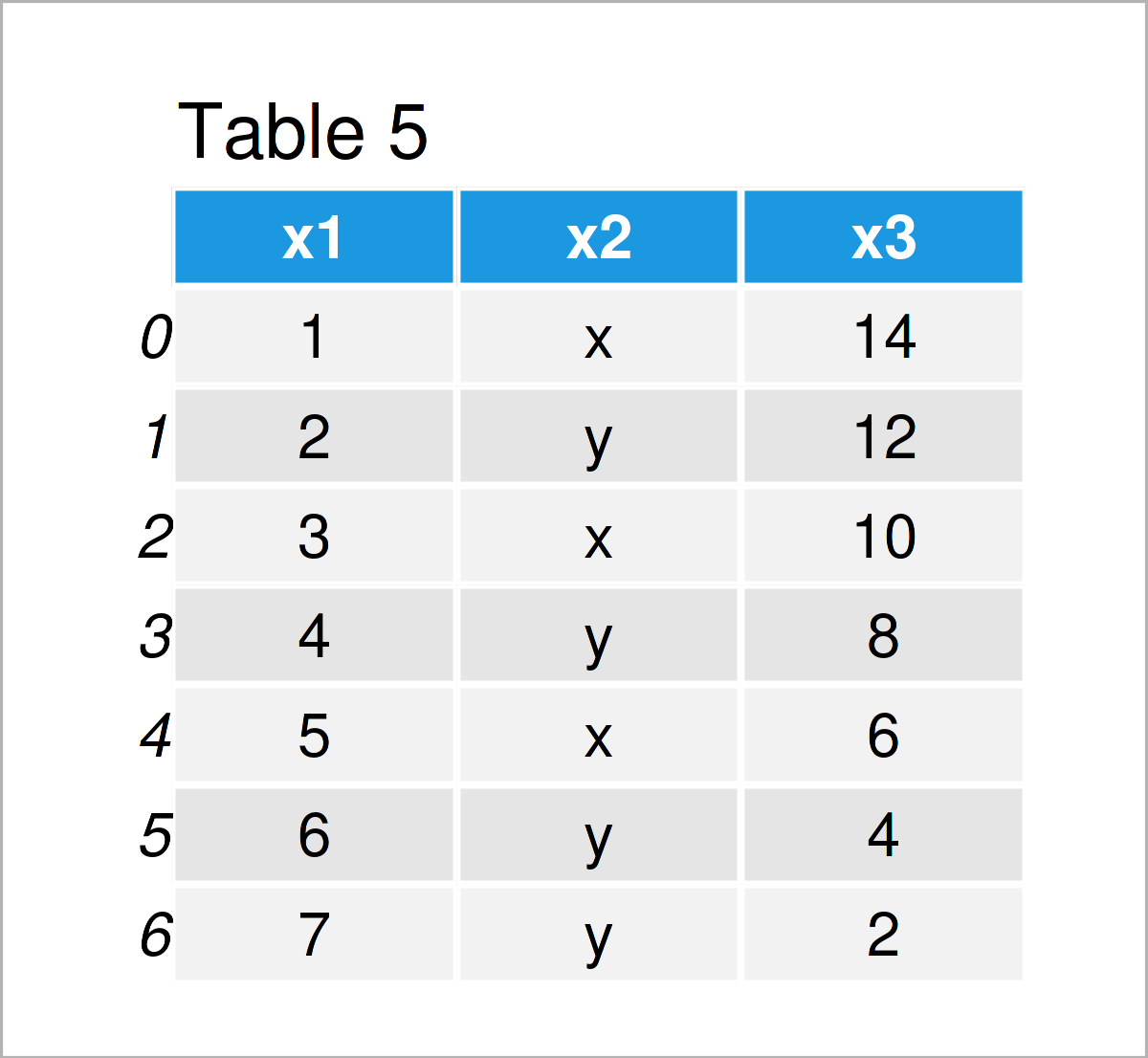
Tables 4 and 5 show the output of the previous Python code: We have created two pandas DataFrames with the same column names.
We can now stack these two data sets on top of each other using the concat function:
data_vertical = pd.concat([data1b, data2b], # Combine vertically ignore_index = True, sort = False) print(data_vertical) # Print combined DataFrame

By executing the previous syntax, we have created Table 6, i.e. a stacked version of our two input data sets.
Video & Further Resources
Some time ago, I have published a video on my YouTube channel, which shows the topics of this article. Please find the video instruction below.
Besides that, you could have a look at the related tutorials on my website:
- Introduction to the pandas Library in Python
- pandas DataFrame Operations in Python
- DataFrame Manipulation Using pandas in Python
- Types of Joins for pandas DataFrames in Python
- Add Multiple Columns to pandas DataFrame
- Add Column from Another pandas DataFrame
- rbind & cbind pandas DataFrame in Python
- Merge List of pandas DataFrames in Python
- Merge pandas DataFrames based on Particular Column
- Merge pandas DataFrames based on Index
- Merge Multiple pandas DataFrames in Python
- Merge Two pandas DataFrames in Python
- Insert Row at Specific Position of pandas DataFrame
- Combine pandas DataFrames with Different Column Names
- Combine pandas DataFrames with Same Column Names
- Append Multiple pandas DataFrames in Python
- Append pandas DataFrame in Python
- Python Programming Language
To summarize: In this Python tutorial you have learned how to join and add two pandas DataFrames vertically and horizontally to create a data set union. Tell me about it in the comments, in case you have further questions.






